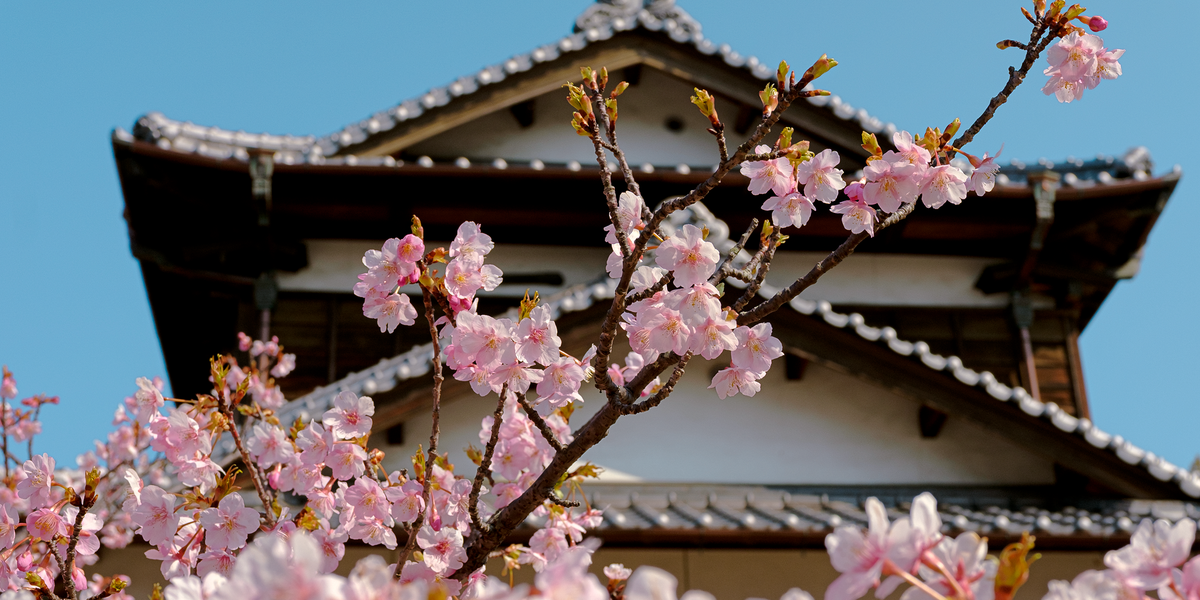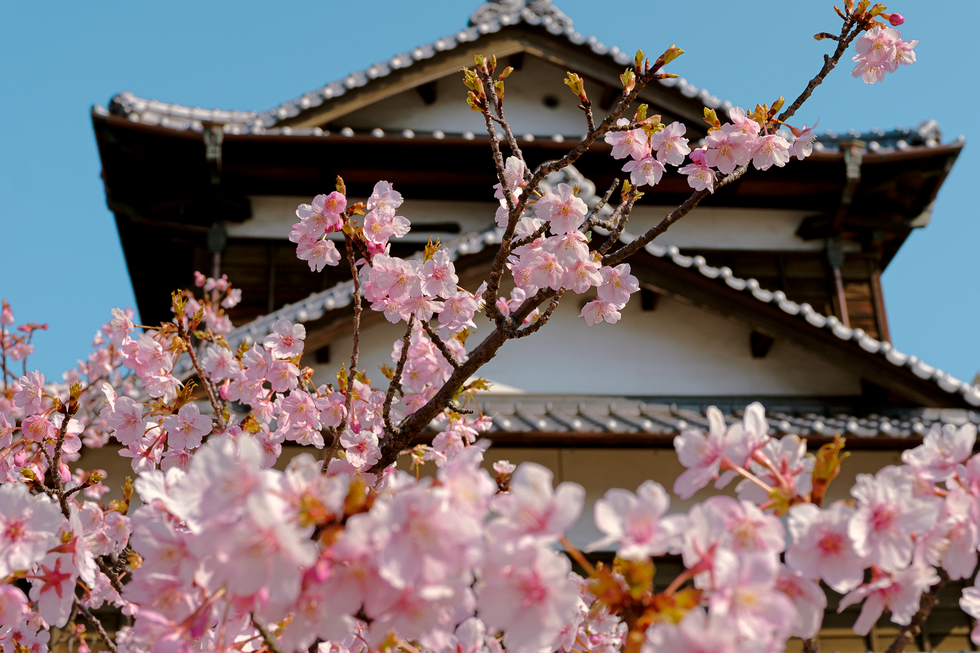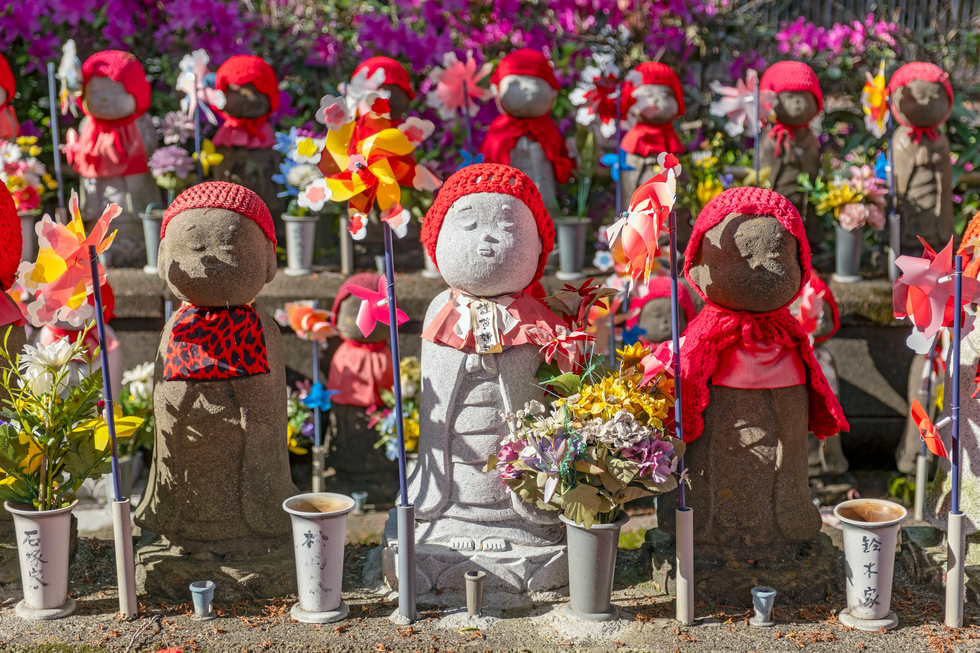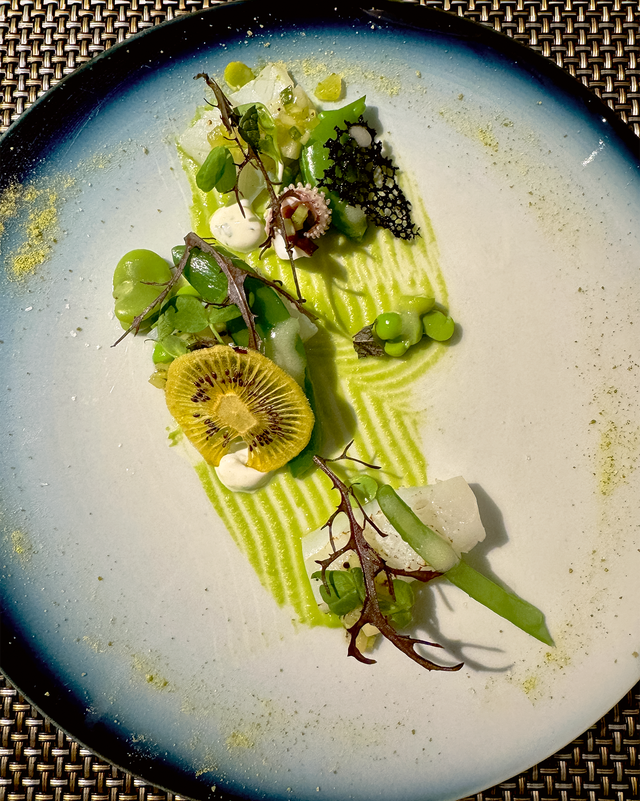I planned our trip to Japan almost by accident.
I was on the brink of my fifth year trying to bring a child earth-side into our lives, and I had become extremely fluent in the particular dialect of grief that comes with miscarriage and infertility when I read about the 1,000 Kosodate Jizō-son, the Garden of Unborn Children. The shrine is a collection of more than 1,000 statues of Jizō, the guardian deity of children, tucked into a corner of Zōjō-ji, a Buddhist temple in Tokyo. Families leave tributes at each statue, to honor lost loved ones and protect them on their path
to an afterlife. I was floored by the open display of grief and love, jealous of the cultural norms in place that codify such honesty. As an American, I’d long struggled with our discomfort, as a culture, with grief. Healing from my own losses had felt pretty isolating, and I
was immediately tugged to go visit that sacred space.
I’d been on the hunt for a big trip for my husband and I to take in the fall. Besides an occasional three-day weekend in between appointments (and disappointments), we’d spent the previous years essentially grounded and had finally given ourselves permission to prioritize our mental and emotional well-being. My little pilgrimage was a perfect reason to map out a much larger trip to Japan. Owen had been once before, but I had never been. I felt a little guilty making him retread the Golden Route of Tokyo, Kyoto, and Osaka, so I decided to tack on an extra few days on the northern island of Hokkaido to make sure we were seeing something new to both of us. Also, as Owen kept reminding me, these parts of Japan felt especially endless. With so much to do, see, and eat, he was looking forward to going back and catching things he had missed the first time round.
We spent a whirlwind two and a half weeks crisscrossing the country, eating and drinking our way through each city, punctuating our days with visits to shrines, temples, forests, and gardens. I marveled at the ways in which every industry seemed bespoke, from the restaurants that served just one thing (but the best version of that thing) to the goods that craftsmen packaged with a folded furoshiki. Mostly, I was overwhelmed by the juxtaposition of the traditional and the modern at every turn that seemed fundamental to Japan—21st-century skyscrapers soared over temples that had been built in the 600s, moss gardens flourished alongside department stores. Nothing was either, everything was and—yet none of it felt indulgent. Yes, buy the tamago sandos at the convenience stores, and go out for a 15-piece sushi omakase. Yes, walk through the bamboo forests, and also walk the miles of underground malls. Because belying the culture’s ambitious maximalism—the dizzying verticality of buildings, the food, and the preponderance of stuff—is a quiet minimalism that comes with the patient mastery of so many art forms over the course of centuries.
I ended up saving our visit to 1,000 Kosodate Jizō-son for one of our final days in Tokyo. I’d hesitated to make the pilgrimage too early in the trip for fear of tingeing the entire vacation with sadness. There are also a lot of customs around visits to shrines, some polite protocols you have to learn, and I didn’t want to misstep. On a quiet afternoon, with lots of practice under our belts, we headed down to Zōjō-ji to, quite literally, pay our respects. We donated a 500-yen coin for a pinwheel offering and went outside to leave it beside one of the many Jizō. There, among the hundreds of tiny statues, surrounded by the palpable outpouring of grief and love from the countless families that had come before us, it was impossible to feel alone. I came to Japan in search of some sort of closure, I think, but was stunned by all the ways the country ended up cracking me open. It would be trite to pretend that our trip healed all our traumas, that this moment let us “move on,” but in the end, I’m not sure it needed to. There’s something to be said for giving ourselves the space to feel our highs and lows, our joy and our heartache. Instead of picking either, we ended up leaving with so much and.

Paulie Dibner is the Executive Editor of Oprah Daily.




